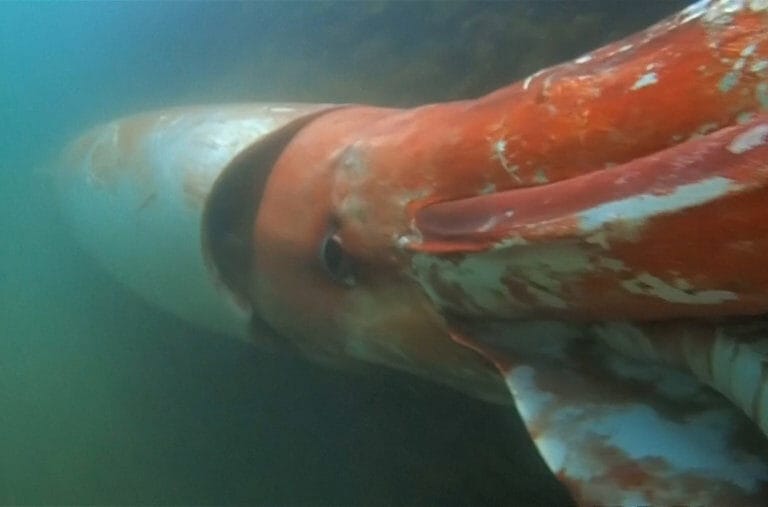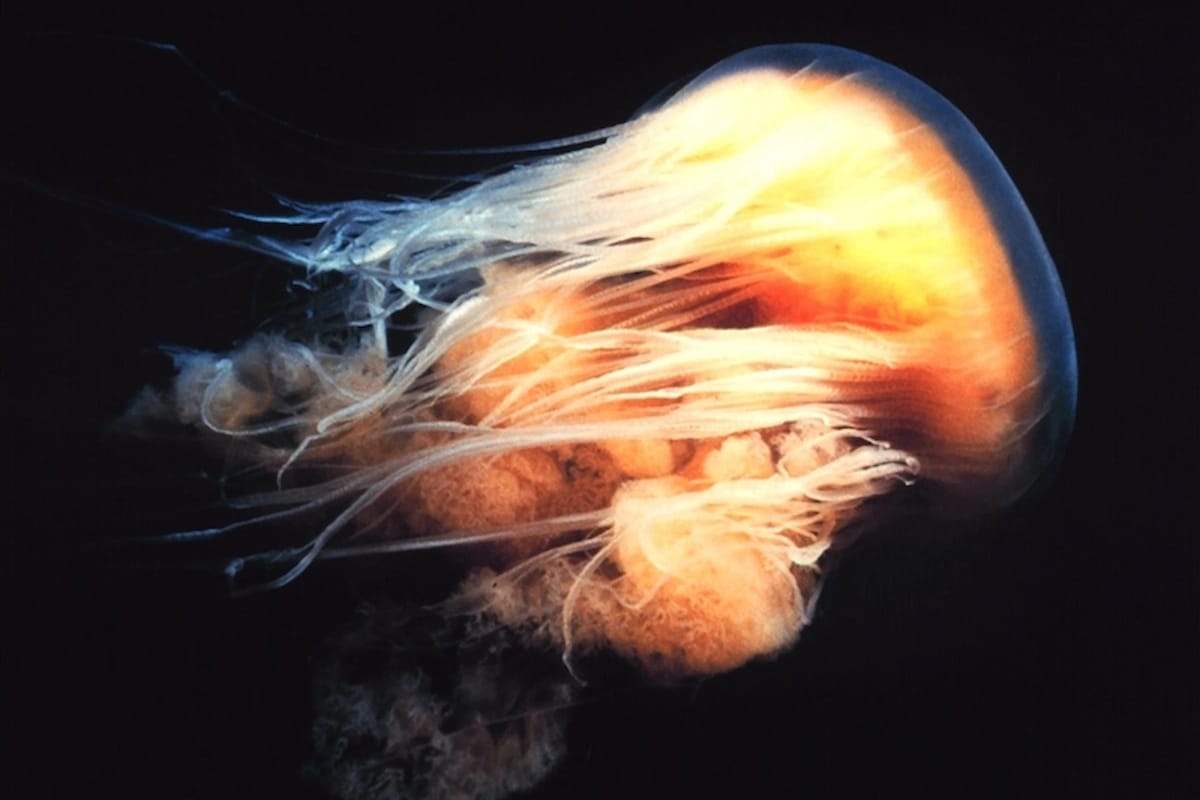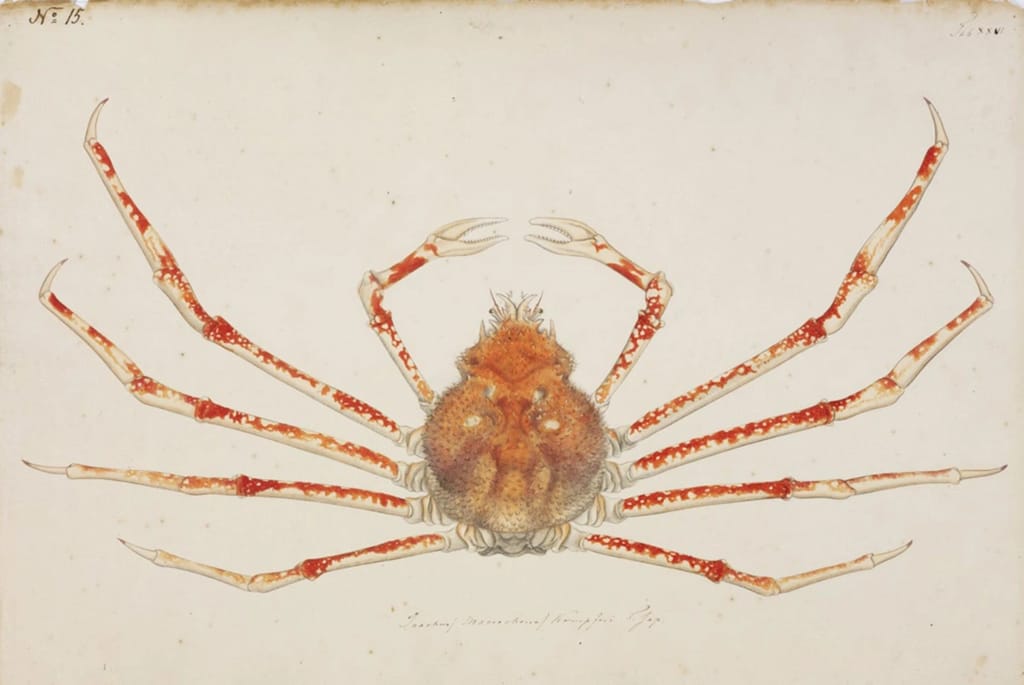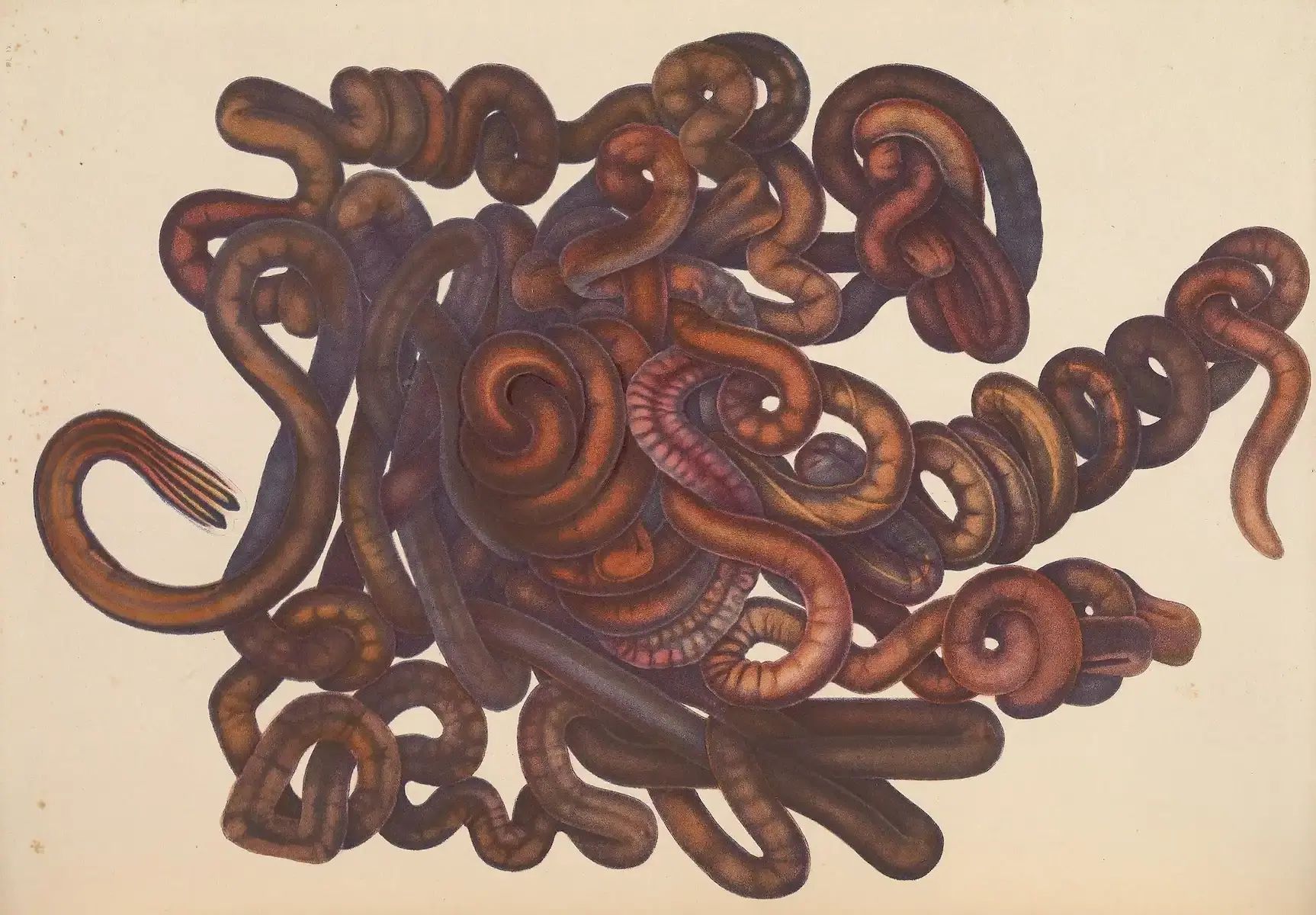When you think of BIG ocean animals, you probably think of blue whales or whale sharks. But, there is a whole class of ocean animals that we should also be thinking of when it comes to size—marine invertebrates.
Did you know that more than 98% of species on Earth are invertebrates? And, when you focus on just the ocean—invertebrates constitute 92% of life in our ocean.
Love ocean content?
Enter your email and never miss an update
document.addEventListener(‘DOMContentLoaded’, function() {
const form = document.getElementById(’email-signup-646fc31a1d22b’);
form.querySelector(‘.rsform__field–email’).addEventListener(“nb:result”, e => {
const nbStatus = form.querySelector(“[name=”nb_email_status”]”);
const nbDate = form.querySelector(“[name=”nb_validation_date”]”);
const tokenField = form.querySelector(“[name=”token”]”);
const currentDate = new Date();
nbStatus.value = e.detail.result.response.status;
nbDate.value = currentDate.toISOString().split(‘T’)[0];
grecaptcha.enterprise.ready(async () => {
const token = await grecaptcha.enterprise.execute(‘6Lcmr3shAAAAAAVRlvJrsUufEEQuItzNDlkpmB2g’, {action: ‘verify’});
tokenField.value = token;
});
});
});
<!– –>
Hold on, what exactly is an invertebrate? Animals that lack a backbone are known as invertebrates. Since they don’t have a backbone, they have developed other means for support like exoskeletons, shells or even glass spicules (small pointy objects). Ocean invertebrates have a wide range of sizes and habitats. Some are microscopic—while others are really long! Some live at the surface of the ocean, others in the deep midnight zone. Their habitat ranges from the cold Arctic waters to the warm tropic seas. Invertebrates play a BIG role in ocean ecosystems. Healthy populations of marine invertebrates are crucial to a balanced ecosystem in the ocean. Ocean invertebrates are tasty prey for fish, marine mammals and even humans. Some invertebrates, like corals and oysters, provide habitat for marine species.
A few well-known ocean invertebrates include sponges, corals, octopuses, sea urchins, starfish, crustaceans, sea cucumbers and nudibranchs. But, who reigns supreme when it comes to size? The following invertebrates prove that you don’t need a backbone in order to grow BIG! Let’s dive in and explore.
Giant Squid
40-feet long and has the largest eye in the animal kingdom

if(typeof window.oc_media_credits === ‘undefined’) {
window.oc_media_credits = {};
}
window.oc_media_credits[40911] = “Reuters “;
Giant squids can grow to be more than 40 feet long, if you measure all the way out to the tips of their two long feeding tentacles. The largest giant squid ever recorded by scientists was almost 43 feet long and may have weighed almost a ton. Giant squid live deep underwater—in the Twilight Zone—at depths between 1,000 and 2,000 feet. Since the giant squid live so deep in the ocean, there isn’t very much that we know about them. Giant squid have the largest eyes in the animal kingdom. Again, this is because giant squid live in the Twilight Zone. Because it is so dark, they need large eyes to pick up any tiny amount of light that passes through to that depth. This helps with hunting prey and avoiding predators. The size of their eyes can be up to ten inches in diameter.
Lion’s Mane Jellyfish
AKA the giant jellyfish

if(typeof window.oc_media_credits === ‘undefined’) {
window.oc_media_credits = {};
}
window.oc_media_credits[69022] = “Kip Evans/ NOAA”;
Does the bell of this jellyfish really look like a lion’s mane? Take a look at the photo and decide for yourself! But, beware and stay far, far away … the lion’s mane jellyfish has a toxic sting. The lion’s mane jellyfish’s bell can reach about eight feet in diameter, and its tentacles can grow to more than 100 feet long. To put that into perspective, that’s longer than a blue whale, which is the largest mammal on Earth. The habitat for the lion’s mane jellyfish is mostly in the cooler waters of the Arctic and the North Pacific oceans from Alaska to Washington state.
Japanese Spider Crab
largest known leg-span of any arthropod

if(typeof window.oc_media_credits === ‘undefined’) {
window.oc_media_credits = {};
}
window.oc_media_credits[69028] = “Kawara Keiga/ Wikimedia “;
Japanese spider crabs are BIG—they span up to 12.5 feet between the tips of their front claws. Japanese spider crabs live in the Pacific Ocean off the coast of Japan and as far south as Taiwan. Their habitat is the deep ocean—dwelling in the cold, dark depths. The Japanese spider crab has ten legs: eight walking legs and two legs that have claws. These crabs are scavengers, walking along the seafloor and eating bits of dead animals that fall from above.
Giant pacific octopus
largest octopus species

if(typeof window.oc_media_credits === ‘undefined’) {
window.oc_media_credits = {};
}
window.oc_media_credits[37153] = “Richard Carey/Fotolia”;
The giant Pacific octopus is the largest octopus species. It is also the longest living. It is probably one of the most easily recognizable octopuses because of its bright reddish-pink color. The giant Pacific octopus enjoys a life of solitude and enjoys spending time alone in its den—venturing out only to hunt for food. Giant Pacific octopuses are venomous—they inject their venom into prey with their sharp beaks.
Nautilus
living fossils of the sea

if(typeof window.oc_media_credits === ‘undefined’) {
window.oc_media_credits = {};
}
window.oc_media_credits[38876] = “PeterWard/UW News”;
The first nautilus species appeared over 500 million years ago—hundreds of millions of years before the dinosaurs! Today, there are six species of nautilus—and their habitats are in the Pacific and Indian oceans. They can grow to be about 10 inches in diameter—and ancient nautilus were believed to be 10-feet in diameter. Their iconic spiral shells are specially designed to help nautiluses move throughout the water column. The nautilus uses jet propulsion to roam the ocean deep.
Marine nemertean worm
AKA the bootlace worm

if(typeof window.oc_media_credits === ‘undefined’) {
window.oc_media_credits = {};
}
window.oc_media_credits[69030] = “Wikimedia commons”;
The marine nemertean worm is a type of ribbon worm that lives in the chilly waters of the North Sea. Its habitat is in shallow areas along the rocks. Marine nemertean worms have been found as long as 98 feet and are believed to grow as long as 197 feet. These worms are long, but narrow—only about one inch in diameter. Ribbon worms have the ability to expand or contract their bodies. Their muscles allow them to contract their bodies to get smaller when scared or threatened. And, they can also expand to swallow food.
Great Barrier Reef
one of the natural wonders of the world

if(typeof window.oc_media_credits === ‘undefined’) {
window.oc_media_credits = {};
}
window.oc_media_credits[69019] = “Gary Patton”;
While not a single species, the Great Barrier Reef is a coral—an invertebrate belonging to a group of animals called Cnidaria. Coral reefs are made up of tiny organisms called polyps. The polyps are soft-bodied but secrete limestone skeletons for support. Large, iconic reefs are formed when many, many polyps come together and build on one another. The result is a colony of polyps that actually act as one organism!
The Great Barrier Reef is located in the Coral Sea, off the coast of Queensland, Australia. The Great Barrier Reef is the largest complex of coral reefs, shoals and islets in the world. Despite its name, it is not a single reef but actually includes some 2,900 reefs. It stretches more than 1,250 miles from northwest to southeast, a length comparable to that of the Pacific coast of the United States. Its area is about 135,000 square miles.
Explore Even More
You can explore even more ocean invertebrates in Ocean Conservancy’s Wildlife Library! It’s free to access (and you don’t need a library card). Go ahead, click on the link and learn some more today.
You Can Help
As the ocean continues to experience the negative effects of climate change, these marine invertebrates are in trouble. Invertebrates are harmed by increasing levels of ocean acidification—which is occurring because the ocean has absorbed carbon dioxide and become more acidic. These changes threaten invertebrates and their ability to grow and survive.
Ocean Conservancy is at the forefront of the battle against ocean acidification, working with communities, fishermen, governments, businesses and conservation to tackle the root cause of acidification: carbon emissions. We are also advancing local solutions to reduce runoff and supporting research to protect jobs, coastal economies and the way of life of our coastal and island communities.
Will you donate to Ocean Conservancy to help us implement real solutions to curb carbon emissions and protect our ocean, marine invertebrates and ourselves from the deadly impacts of ocean acidification?
The post Biggest Invertebrates in the Ocean appeared first on Ocean Conservancy.

